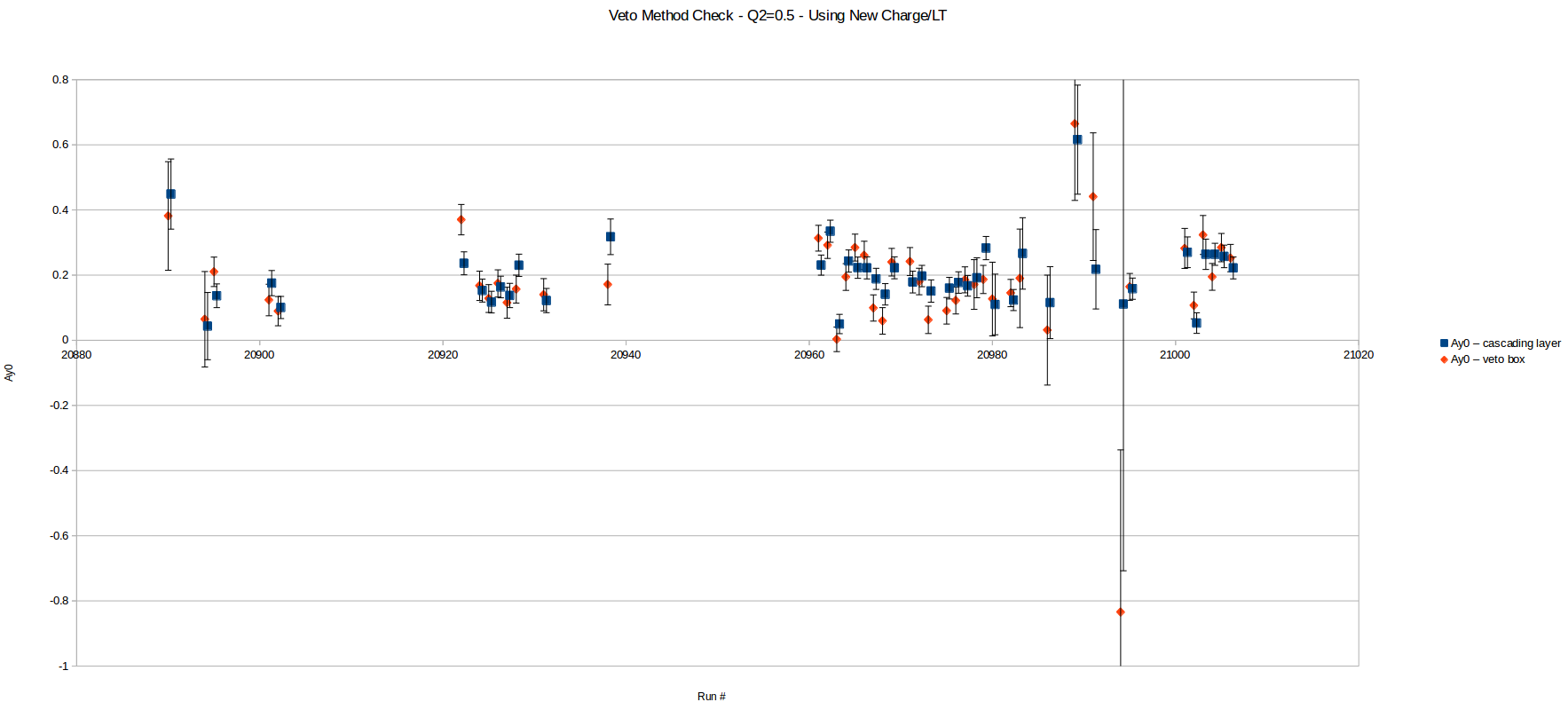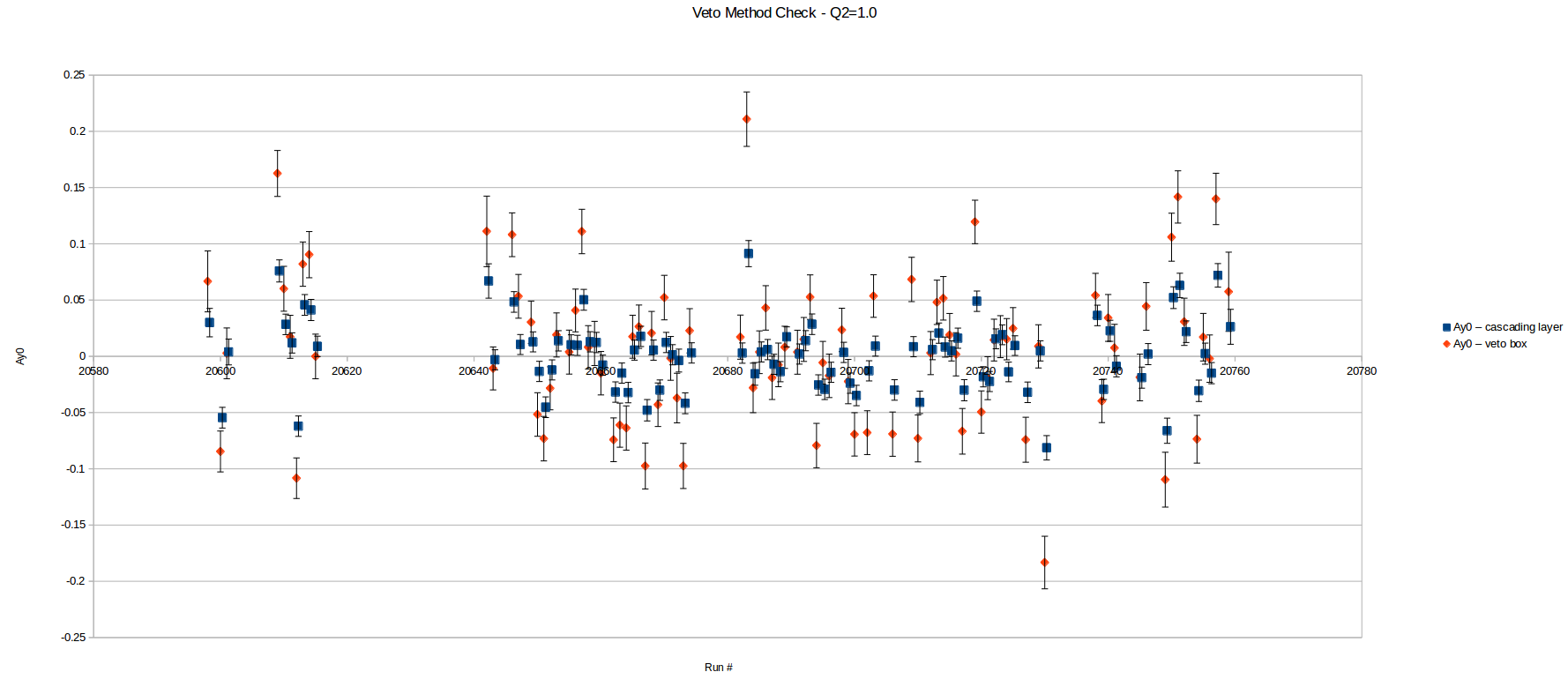10/21/2014 Meeting
I redid the Ay0 analysis using a cascading layer veto method (where each entire layer acts as the veto layer for the layer behind it), instead of the boxed veto method (what I was doing previously, where I'd look at each bar on its own and only consider the bars directly in front of, above, and below veto bars). I was curious how much the 'easier' cascading layer veto method differed from the box method. The results were interesting, and attached.
| Cascading Layer Veto | Box Veto |
|---|
 |  |
For all Q2=0.1, there's not much difference, although there are a few runs that come out well higher than previously. I haven't looked into them individually yet. The end result is largely the same, with a slightly higher central value for each nu bin.

The Q2=0.5 and 1.0 are very fascinating. The spread I was seeing before is greatly reduced when using the cascading layer veto (although the statistical uncertainty is still too small). In all cases, the end result in nu doesn't change very much depending on the method. Since the spread is reduced using the cascading layer veto, I'm inclined to move forward using only that method.




The end result of this seems to be that the spreading effect was caused by the veto cuts on HAND. Interestingly, the chi^2/dof is roughly the same using both methods, indicating that my statistical error bars are still too small. If I apply the factor labelled "S" to them, they'll grow to chi^2/dof=1, as I did before. I think it makes sense to include this factor in the statistical, not systematic, uncertainty and was wondering if you agree.
In addition to comparing the two veto methods, there are also files labeled *_old, which use charge/LT information gathered from every single event in a run. The ones labeled *_new use charge/LT information after basic good electron cuts have been made. I think for Q2=0.1 I accidentally overwrote the old with the new, because there is no difference between them. For Q2=0.5, there is a slight difference, but it's small. For Q2=1.0, the difference is massive, going from +0.5% to -4.5%. The magnitude seems to be caused in party by the trigger counting for the livetime.


















